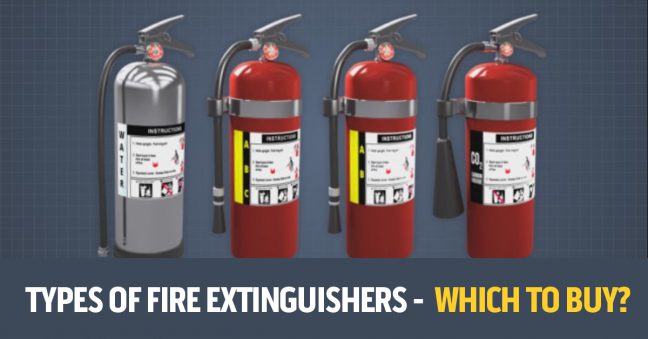
We can all agree that it's a good idea to have fire extinguishers at work (and the home, too). In fact,OSHA has rulesabout that (though, of course, withsome exceptions).
But not all fire extinguishers are the same. There are different types.
Which leads us to the all-important question: If you ARE going to buy fire extinguishers, what type should you buy?
We'll explain the different types of fire extinguishers in this article to you and give you the information you need to understand the different fire extinguisher types and select the right extinguishers for your workplace.
We'll tell you what you need to know about fire extinguisher types and how to select the right ones for your workplace in this article, but you may also want to do some self study to learn what fire really is, how it works, and how it's put out. Some people talk about this in terms of something call the fire triangle, and some refer to the fire tetrahedron. Read more about thefire triangle and fire tetrahedronhere.
Before you begin, you may also be curious about how a fire extinguisher works. Here's an explanation taken from a short sample of ourFire Extinguisher Safety online training course.
Convergence Trainingis a training solutions provider with a long history of creating safety and health training solutions.
Click the links to learn more about our training management solutions, safety and health eLearning course libraries, and custom training solutions.
Getting the right types of fire extinguishers at work can be broken down into a simple four-step process:
We'll walk you through all this in the sections below.
Not all fires are the same.
Instead, there are different types of fires, and what makes them different is the kind of fuel that the fire is burning. For example, if gasoline is burning, gasoline is the fuel, and if paper is burning, paper is the fuel.
Fire experts have named the different types of fires using a 5-letter naming system (Type A, Type B, Type C, Type D, and Type K). The type of fire depends on what is fueling the fire.
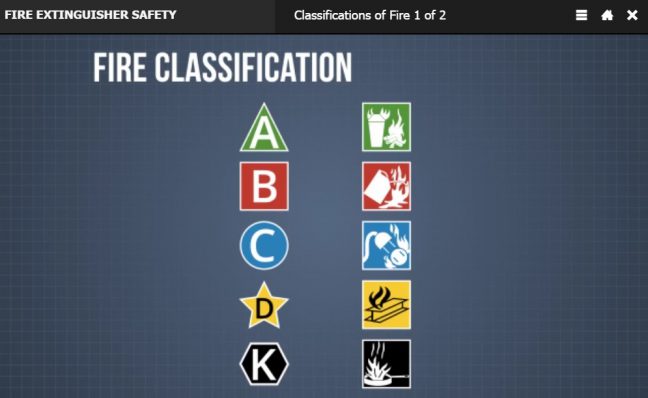
下面的表格将解释这些不同类型的fires. Note that these fire types are also known as fire classes.
| Type of Fire | Description of Fire |
|---|---|
| Type A | Fires involving wood, paper, cloth, rubber, and many plastics. |
| Type B | Fires involving flammable liquids and gases including gasoline, solvents, propane, and paints. |
| Type C | Fires involving energized electrical equipment, including fuse boxes, wiring, control panels, computers, copiers, machines, and appliances. In short, anything plugged into electricity. |
| Type D | A fire involving metals, including combustible powders, shavings, or flakes of metals such as magnesium, titanium, potassium, and sodium. |
| Type K | Fires involving cooking oils and fats often used in commercial kitchens. |

Now that you understand the different types or classes of fires, and know it's all based on what fuels the fire (what's burning), you'll want to inspect your workplace and see what's there that could provide fuel to a fire.
For example, do you have a lot of wood, paper, cloth, and rubber around? That means you have Type A fire hazards at work.
Do you have a lot of flammable liquids and gases, such as gasoline, propane, and/or paints? That means you have Type B fire hazards at work.
The odds are you'll have more than just one type of fire hazard at the workplace--for example, you may have Type A, Type B, and Type C fire hazards.
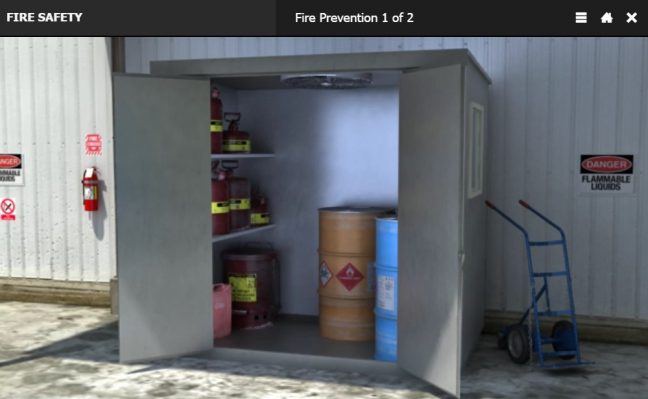
The following resources are helpful guides for performing your workplace fire inspection:
Important note: In many or most workplaces, you will have things such as paper, wood, gases, and combustible fluids that can theoretically act as fuel for a fire. That's inevitable. But that doesn't mean you should allow significant fire hazards and risks to be present (for example, flammable liquids stored directly next to a hot machine in an area with no ventilation). Always assess your work area for fire hazards and control them.
Now that you know the types of fires you might experience at work (based on the possible fire fuels present at your worksite), it helps to know about the different types of fire extinguishers.
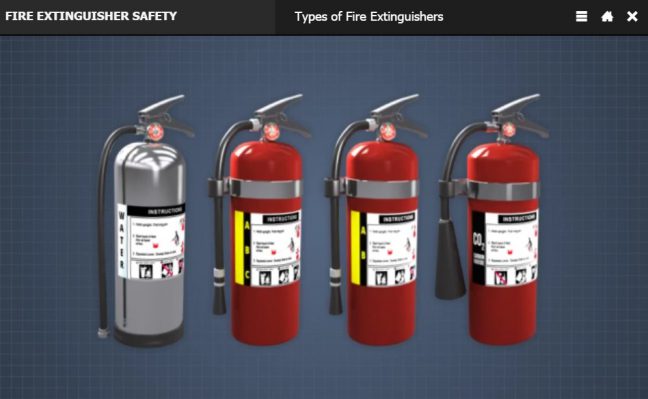
There are two ways to think about the different types of fire extinguishers. They are:
We'll give you an explanation of both ways of thinking about this below. But remember, job one is to get the fire extinguisher types that will put out the fires you may see at your work based on the fuels at your workplace.
Ignoring the issue of what the fire extinguisher actually shoots out in order to extinguish a fire, different fire extinguishers are capable of putting out different types of fires. So if you know your fire hazards at work, you just need to buy an extinguisher or different types of fire extinguishers to put out fires burning the different fuels at your work.
Fire extinguishers have labels that tell you what kind of fire they can put out. Some extinguishers can put out only one type of fire, such as Type A. Other extinguishers can put out several different types of fires, such as Types, A, B, and C. You can also check with the fire extinguisher's manufacturer to learn the types of fires the extinguisher can put out safely.
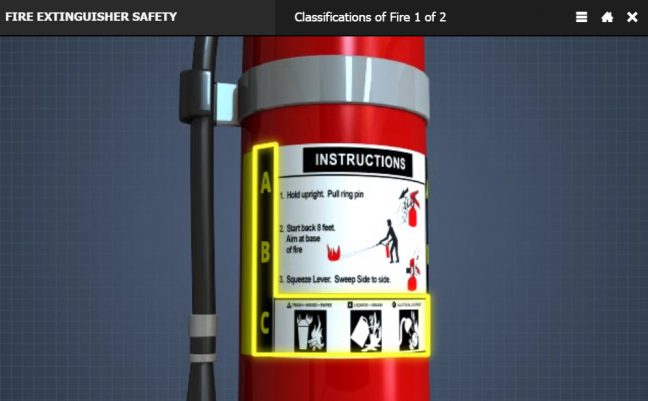
The image above shows a fire extinguisher that can put out Types A, B, and C fires.
People also talk about fire extinguisher types in terms of the material that comes out of the extinguisher to put the fire out (for example, water, carbon dioxide, powder, etc.).
We'll give you information about each different type of fire extinguisher below, including telling you the class (or type) of fire they're capable of putting out.
Water and Foam Fire Extinguishers
These are ONLY for Class A fires. Never use them on Class B or C fires--they could actually make the fire worse if you did.
Carbon Dioxide Fire Extinguishers
These are for Class B and C fires. They typically don't work on Class A fires.
Dry Chemical Fire Extinguishers
There are really two types of dry chemical fire extinguishers:
Multipurpose dry chemical extinguishers--these put out Class A, B, and C fires
Ordinary dry chemical fire extinguishers--these put out Class B and C fires only (not Class A).
Multipurpose dry chemical fire extinguishes are the most commonly used fire extinguisher because they can put out so many different types of fires.
Wet Chemical Fire Extinguishers
These fire extinguishers are typically for Class K fires.
Some of these fire extinguishers can also put out Class A fires.
Clean Agent Fire Extinguishers
These extinguishes are for Class B and C fires.
Some larger extinguishers of this type can also be used on Class A, B, and C fires.
干粉灭火Extinguishers
Dry powder fire extinguishers are for putting out Class D fires only. They work on no other classes of fires.
Water Mist Fire Extinguishers
This is a newer type of fire extinguisher and it can put out Class A and C fires (though primarily they are used for Class A).
Cartridge-Operated Dry Chemical Fire Extinguishers
These extinguishers are very similar to the dry chemical fire extinguishers we mentioned above. The key difference is if they are "stored pressure" extinguishers (the ones mentioned above) or if they are cartridge-operated (these extinguishers). But the propellant is the same in each case.
In the same way as the stored pressure dry chemical extinguishers above, we can break-down the cartridge-operated dry chemical fire extinguishers into two different types--multipurpose and "ordinary."
If a cartridge-operated dry chemical extinguisher is multipurpose, you can use it for Class A, B, and C fires.
And if it's an "ordinary" cartridge-operated dry chemical extinguisher, you can use it for Class B and C fires (not Class A).
Want to Learn Even More about Fire Extinguisher Types?
It's not a bad idea to learn even more about these fire extinguisher types, including exactly how they work to extinguisher a fire. ThisTypes of Fire Extinguisherswebsite from the Fire Equipment Manufacturers' Association is a great starting point to learn even more.
This step is perhaps the easiest but also the most important step in the fire extinguish type selection process.
You now know the different types of fires (based on the fuel they burn). You know the fire hazards at your workplace (based on the types of fuels present at your workplace). And you know that different types of fire extinguishers are capable of putting out specific types of fires.
So all you have to do now is connect the dots: the things at your workplace that can act as fuel for a fire, and the different fire extinguisher types we just listed. Pick the right type of fire extinguisher (or fire extinguishers) for the type of fires you might need to extinguish at work, and you're set.
A couple of addition notes for you:
But remember, you don't have to go this alone. Contact your local fire department, they may be willing to help you make the right choices. Your insurance company may also be able to provide helpful resources. Also,OSHA offers free consultation servicesand can help you make this decision (plus others too). And finally, there are many safety and health consulting companies out there that can help with this (for a fee, of course).
Hope you found this overview of different fire extinguisher types, and how to choose the best fire extinguisher for your work (or home), helpful.
We're going to close with some links to other sources of information that may help you on this topic:
In addition, you may find the following articles related to fire safety and fire extinguishers helpful:
Finally, you may want to consider our onlinefire extinguisher safety training video.
And why not download the free guide to performing a Job Hazard Analysis at the bottom of this article, too?
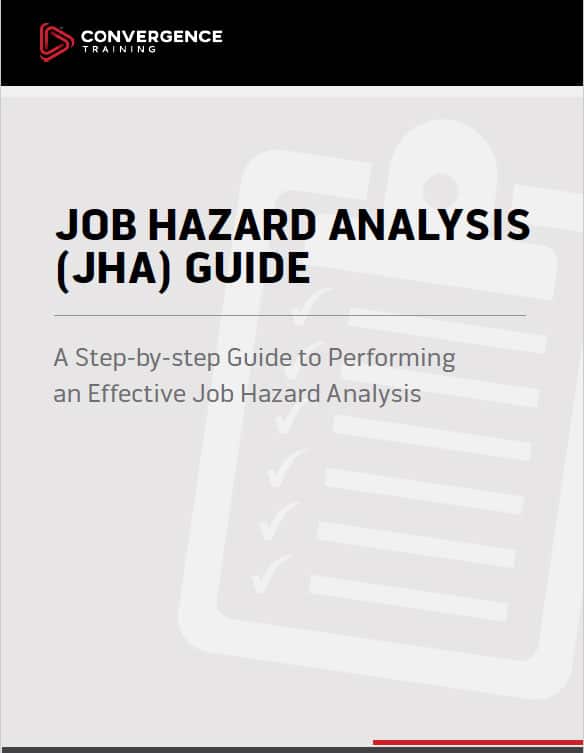
Learn how to perform a job hazard analysis on the job with our free step-by-step guide.